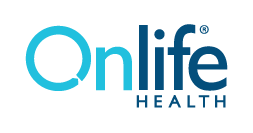Apr 2023 Our Point of View on Point Solutions
Healthcare point solutions are highly valuable. But there is a downside that needs to be addressed.

The popularity of healthcare point solutions—applications and technologies that help users address a specific health or well-being issue— has increased dramatically in recent years. Both employers and health plans use point solutions to address specific health concerns within the populations they serve, from lowering blood pressure to managing diabetes.
Unfortunately, the growth of point solutions has produced unintended consequences. Many employers and health plans are overwhelmed by the sheer number of apps they have to vet, implement, manage, secure, and then monitor to ensure employee and member engagement is optimized. In the vetting process alone, there are thousands of third-party point solution vendors to choose from. In fact, an estimated 50 percent of organizations are working with up to nine digital health solutions at any one time. 1
Overseeing such a wide array of vendors is inefficient and time-consuming, creating an administrative burden that can rob an organization of time, money, and resources. And if an employer or health plan decides to use multiple point solutions to cover a comprehensive range of health issues, the costs can add up quickly. To make things worse, the data collected by each app often exists in a separate silo. To solve this problem, each point solution must be integrated with all of the other solutions. The need for system and data integration increases, and so does the cost.
CONSUMERS ARE FRUSTRATED, TOO
From the consumer side, point solutions create similar challenges for members and employees. Apps are everywhere. The Apple App Store alone has 1.96 million apps available for download, and there are more than 350,000 digital health apps worldwide. 2 Having access to so many choices and information may seem like a positive in terms of making care more effective and available, but it can often overwhelm consumers, causing them to not act at all. In fact, half of consumers today say that they have avoided seeking care altogether because it requires so much work. 3
Even when you don’t factor point solutions, navigating the healthcare system is already a confusing and fragmented experience for consumers, who must make their way through a maze of medical specialists, provider networks, cost options, and coverage questions as they seek to find help for, in many cases, multiple health issues. It’s no wonder more than 2/3 of consumers say that every step of the healthcare process is a chore. 4 Having an ever-increasing number of point solutions available can only exacerbate the difficulty, frustration, and confusion that consumers are already experiencing.
A PROVEN SOLUTION FOR POINT SOLUTIONS
So, what can be done? What can health plans and employers do to manage point solutions more efficiently and simplify the healthcare experience for their members and employees, so they become more engaged?
What consumers need is not more choices but guidance, not more information but clarity.
What’s required is a health and well-being platform that can integrate point solutions, as well as other third-party vendor partners and an organization’s internal resources, into its platform to create a seamless member experience. Such a platform can guide each member to the most clinically relevant point solution, simplifying the entire process. It can also provide true data interoperability between the different point solutions, replacing siloed information with a fluid exchange of data that can then be analyzed to reveal important insights regarding population health. This kind of deep integration by an enterprise health and well-being platform can help health plans and employers eliminate many of the inefficiencies and frustrations that come with managing a hodge-podge of multiple disconnected vendors.
To optimize how your organization is using point solutions, here are some key questions to ask your current or potential health and well-being platform.
- Can you integrate our current point solutions into your platform to create a seamless experience for our members or employees?
- Can you promote third-party point solutions, especially those that have a high priority for our health plan?
- Can you guide each member to his or her most clinically relevant point solutions to support value-based care and lower healthcare costs?
- Can you help us choose, select and then implement a new point solution within your platform?
- Can you consolidate your well-being capabilities with our plan’s benefits and services?
Find out how Onlife would answer these and any other questions you may have. Contact us today for a 1:1 demo and put us on the hot seat!
https://medcitynews.com/2022/09/employer-point-solution-fatigue-how-can-health-startups-rise-above/
2 Digital Health Apps balloon to more than 350,000 available on the market, according to Iqvia report. MobiHealthNews. (2021, August 4). Retrieved March 29, 2023, from https://www.mobihealthnews.com/news/digital-health-apps-balloon-more-350000-available-market-according-iqvia-report#:~:text=ASIA-,[…]trends%20report
3 Lagasse, J. (n.d.). Half of consumers avoid seeking care because it’s too difficult. Healthcare Finance News. Retrieved March 29, 2023, from
https://www.healthcarefinancenews.com/news/half-consumers-avoid-seeking-care-because-its-too-difficult
4 Home-Alliance for Connected Care. (n.d.). Retrieved March 29, 2023, from
https://connectwithcare.org/wp-content/uploads/2021/07/telehealth-a-quarter-trillion-dollar-post-covid-19-reality.pdf
2021 annual consumer sentiment benchmark study. (n.d.). Retrieved September 19, 2022, from
https://go.healthsparq.com/hubfs/White%20Papers/2021_HealthSparq_Consumer_Benchmark_Report.pdf

